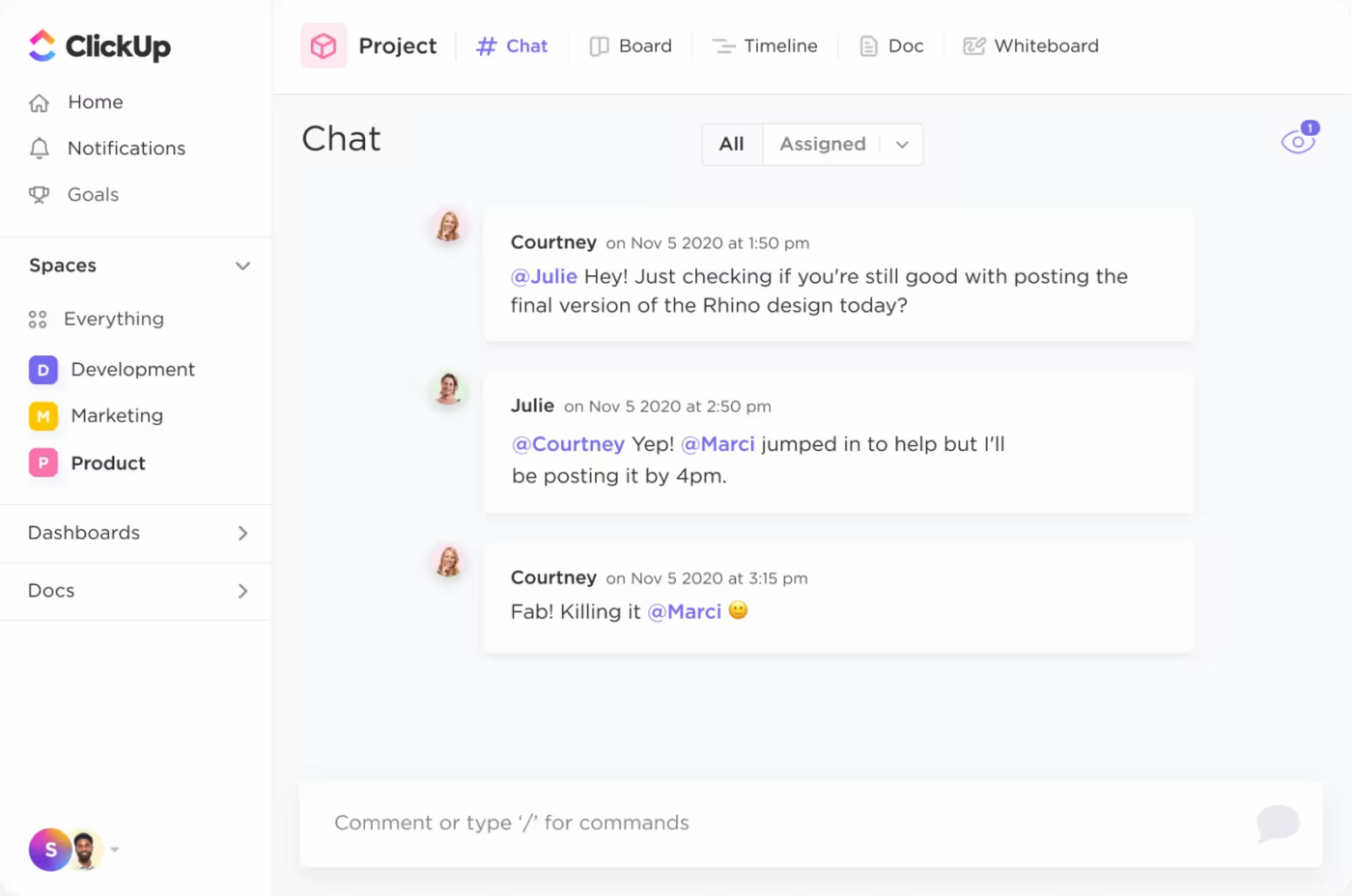Scrum Teams: How to Optimize Remote Team Dynamics

Sorry, there were no results found for “”
Sorry, there were no results found for “”
Sorry, there were no results found for “”
In the wake of a global shift towards remote work, team dynamics are being tested like never before. Team members are scattered geographically across different time zones. They work from home in environments with facilities and distractions that organizations can’t control.
This can be a big challenge, especially in lean scrum teams. The scrum framework relies on self-managed teams collaborating, innovating, and adapting to change. Without the proper dynamics, remote teams are doomed to fail.
In this blog post, we find out how to avoid that.
A scrum team is a cross-functional group of individuals working together to deliver software products in small increments. A scrum team is akin to a sports team, where each team member has a specific role and they all work towards a common goal.
A typical agile scrum team is:
Cross-functional: Includes UI, UX, DevOps, and quality specialists, in addition to the product owner, scrum master, and the development team.
Small: A typical scrum team is less than ten people. Teams are designed to be small enough to be easy to manage yet big enough to complete substantial work in each sprint.
However, sometimes, when the project is large, there is also a possibility of multiple scrum teams working together. Or one scrum team broken down into sub-teams with specialized skills.
Self-organizing: Members of a scrum team are autonomous and self-managed. They can debate, disagree, and resolve conflicts among themselves.
Transparent: Scrum teams use historical data to make plans. They share feedback openly and work together to make progress.
Co-located: Traditionally, scrum teams were co-located. As remote work grew popular, this is no longer the case, at least not in the real world. Yet, to succeed as a unit, they need a digital collaborative space. We’ll get to that later in this blog post.
The agile-scrum philosophy has fundamentally changed the way software is being developed. Instead of the old way, when software development projects spanned multiple years, always sticking to the original plan whether or not it’s applicable any longer, scrum prioritizes business value, customer-centricity, and adaptability. This journey wasn’t quick, though.
The concept of scrum emerged from a 1986 Harvard Business Review article by Hirotaka Takeuchi and Ikujiro Nonaka. They drew parallels between effective, fast-moving, and cross-functional agile teams and the game of rugby.
The term ‘scrum’ is borrowed from rugby, where it signifies a play when team members pack closely together to restart the game.
A few years later, Ken Schwaber and Jeff Sutherland developed scrum as a formal process for software development, presenting it to the public in 1995. This also later evolved into the manifesto of agile development.
While Ken and Jeff designed it initially for software development, Jeff has helped teams across industries and functions adopt the scrum philosophy since.
A scrum team has three critical roles:
We’ll explore each role in an upcoming section of this blog post.
In addition to the self-organizing cross-functional group of people, there are several components and practices to scrum teams. The primary ones are:
Scrum events: Collaborative events that agile teams participate in, such as sprint planning, daily scrum meeting, retrospectives, etc.
Agile scrum terms: A common language for the scrum team, including terms such as sprints, epics, backlogs, etc.
Artifacts: The three key scrum artifacts, i.e., product backlog, sprint backlog, and product increment.
Tools: Free project management software to practice Kanban, record user stories, track progress, etc.
The philosophy of scrum is to develop software in small increments that offer value to the user. To break down features into logical increments, scrum teams need to understand customer use cases.
Let’s take the example of a social media app. If one of the use cases is for the customer to upload images to be shared, then the features to develop within a sprint would be user account > upload images > hashtags > description > post.
On the other hand, without the use case, the team might break this down vertically. So, a sprint might include features such as user profile > user display picture > user profile URL > user verified status > user tips bowl, etc. With this method, the app will only have user profile features, making it unusable until the share feature is launched.
Both these approaches are agile, of course, yet the use case makes the features in the sprint usable when launched.
Together, the product owner, scrum master, and the development team adapt use cases to tasks.
The product owner will ensure the development team understands the user’s needs and how these translate into functional software.
Scrum masters will help prioritize and organize user stories in the backlog for efficient sprint planning.
The development team will understand user feedback and build refinements along the way.
With use cases, scrum teams improve software development outcomes. That is just the beginning. The members of a scrum team do several activities daily to make agile software development successful. Some of the key ones are as follows.
A scrum team has three primary roles: Product owner, scrum master, and the development team. Let’s see what they do and how these scrum team members work together.
The product owner is like a band’s lead vocalist, setting the tone and direction. They are the liaison between the stakeholders and the development team. Their key responsibilities are as follows.
The product owner outlines the goals and vision for the project. They set up the scrum framework, ensuring everyone is aligned and knows what success looks like. They draw the line of sight from business goals to engineering activities.
The product owner is a bit of a backlog owner as well. They’re in charge of the product backlog and prioritizing items based on strategy/objectives for each sprint.
The product owner is the business team’s single point of contact. They communicate with the project sponsor/client and deliver regular reports.
Good scrum teams openly give and receive feedback. Business teams and project sponsors/clients do so too. The role of the product owner is to collect, evaluate, sieve, and articulate feedback for action.
A scrum master is the band’s manager, the one who makes sure the band gets to gigs on time and has everything they need to perform to their potential.
They are masters of the scrum, not of people. So, a scrum master is the team’s facilitator and coach, not a manager. The responsibilities of a scrum master include:
Scrum masters are responsible for ensuring the team follows all scrum practices. They ensure that planning sessions, daily stand-ups, reviews, and retrospectives happen smoothly and are productive.
The scrum master tackles roadblocks along the team’s journey. This could be anything from conflict among development team members to the lack of budget for their needed automation tool. If there’s a problem, call the scrum master.
Consistently following scrum practices needs someone to hold teams accountable. Scrum masters help the team stay focused, offering support and guidance to ensure continuous improvement.
The development team is your group of band members, each playing their own instrument but all contributing to the song.
The vital thing about a scrum development team is that they are cross-functional and have all the skills necessary to do the job, from design and development to testing and deployment. The development team’s collective responsibilities include:
At the basic level, the development team is responsible for creating functional, valuable product increments for each sprint. They take the user story from idea to feature through planning, design, development, testing, and deployment.
Scrum team members are autonomous and have a high sense of ownership. When we say ‘self-organizing,’ we mean that the development team collectively decides how to accomplish their work best, who does what, who helps whom, and how tasks are executed.
The development team is in the weeds of the product. So, they hold the power to identify gaps and make continuous improvement possible in granular detail. After each sprint, the development team reflects on becoming more effective and adjusting their behavior accordingly.
While scrum is one of the most well-defined frameworks, managing a team isn’t easy. It brings with it the challenges we discuss next.
Challenges in scrum team management can be technological, managerial, cultural, or process-oriented. Let’s look at a few common ones.
Lack of role clarity: When a team is lean and cross-functional, responsibilities may overlap. For instance, a UX designer and front-end developer might perform overlapping tasks. There could be unnecessary confusion and conflict without a clear view of the line separating the two.
Solution: This challenge can be addressed with clear role definition, communication, and task management.
Lack of business perspective: The product owner gives the development team the business perspective. However, the business can sometimes keep the product owners in the dark, eclipsing software development teams.
Solution: The product owner needs to address this with a sense of ownership. Tools like survey forms or discovery conversations can be helpful.
Sprint planning: Good sprint planning involves forecasting and estimating effort. Yet, scrum teams struggle with overcommitment or underestimation of tasks, leading to unfinished work or burnout.
Solution: Addressing this challenge demands accurate and high-quality data.
Falling back to old practices: When a traditional software development team is adopting scrum, they are always at risk of falling back to old practices—or superficially performing agile events.
Solution: To overcome this challenge, teams must invest in change management and training. It is not a one-time transition but an ongoing learning effort.
Ineffective communication: Scrum teams thrive on communication. They need to speak to each other in real time and in context.
Solution: A good communication/collaboration platform enables this.
Ever-changing priorities: Adaptability is a scrum team’s primary characteristic. Yet, ever-changing priorities can be frustrating. Adapting to these changes while maintaining productivity and not compromising the project’s scope or deadlines requires a highly flexible and resilient team dynamic.
Solution: You can moderate changes with the business teams. But if you work for an early-stage startup, you’d be experimenting, and changes are inevitable. You can address this challenge with closer collaboration.
A successful scrum team needs tools and processes to help agile project management. ClickUp’s agile project management software is purpose-built for precisely this. Let’s see how you can use ClickUp to address every challenge discussed above.
To be agile, scrum teams need clarity in their roles. A good task management tool can help immensely.
Use ClickUp tasks and create a scrum board to manage the sprint.

A product owner’s role is as much about managing business stakeholders as it is about the agile team. This means product owners need the tools to communicate clearly with the project sponsor/client.
ClickUp Forms streamlines information gathering by asking pointed questions to busy business stakeholders. It sets the context for any future conversations that might be needed.
ClickUp Whiteboards help you have freewheeling brainstorming sessions and discovery while capturing salient points iteratively.

ClickUp’s project management tool is designed to leverage the extraordinary volume of data that any sprint can generate.
Learn more about your people: Add time estimates and track the time taken for every task. Use the Workload view to see the availability and productivity of each development team member so you can allocate resources accordingly.
Manage timelines: Use the Gantt chart view to visualize your project over time. Observe dependencies and make corresponding plans. Drag and drop tasks over the timeline to adjust due dates.
Leverage data: Use ClickUp Dashboards to bring together the various kinds of data you capture, such as tasks completed by week, priorities, project status, etc.

Preventing your teams from drifting off the scrum lane needs effort. ClickUp offers some change management tools to enable this.
Document best practices with ClickUp Docs. Write down the project charter, checklists, etc. and share it with the entire team for easy access.
Use ClickUp Goals to guide the teams towards practicing scrum more holistically. Set up scrum-related goals like conducting regular standups or writing detailed user stories.
Automate standard processes with ClickUp Automations. Set up simple if-this-then-that workflows for changing status when a step is complete or notifying the scrum master when a task is overdue.

If you’re new to scrum/agile team management, use any of the scrum templates available on the platform. Especially the ClickUp agile scrum management template that supports end-to-end agile project management.
The challenges of ineffective communication and changing priorities are best solved with better communication, which we discuss next.
A team that doesn’t talk to each other can not be successful. Remote teams need everything they can get to collaborate effectively. ClickUp’s collaboration features are designed with this in mind.
If your team is working async, they need ways to communicate in writing. Emails can be tedious for this. Try ClickUp Docs to write down processes, standards, events, etc. You can also write minutes of your meetings and share them with every stakeholder for transparency.
What’s cooler? Use ClickUp AI to proofread and summarize your writing. You no longer have to worry about ‘not being a writer’!

Scrum teams spend much time discussing, brainstorming, and planning their work. This needs a collaborative workspace. ClickUp Mind Maps allow you to map out workflows, draw connections, and manage tasks right from there!
If you prefer to document things, edit ClickUp Docs as a team in real-time. See who’s online with ClickUp Collaboration Detection and get them to join you on the doc instantly.
Use scrum tools like Kanban boards to track progress in real-time visually. Customize notifications via email, mobile app, desktop app, or browser based on your preferences.
Ensure that your organizational culture is ideal for agile software development. Create an environment where team members feel comfortable sharing ideas, feedback, and concerns without fear of judgment. Organize regular knowledge-sharing sessions where team members can share expertise, learnings from past projects, or their own experiences.
There is no ‘project manager’ role in a scrum team (though there can be). Autonomous self-organizing teams are expected to manage themselves. However, scrum project management can use some help in the following areas
Most importantly, software development is closely aligned with the end-user’s needs and expectations in scrum. This requires close collaboration between business and engineering. Thankfully, two specific factors make this easier.
User stories are short, simple descriptions of a feature from the user’s point of view that help the team focus on delivering value to the customer. In any sprint, scrum teams work through multiple user stories.
The scrum team collaborates to:
When we speak of a scrum team, we don’t often mention business analyst as a role. While there is a difference of opinion on where in the scrum process business analysts fit, their role is clearer.
In a scrum team that has a business analyst role, they help understand business needs, translate them into actionable items, and ensure that the solutions developed meet requirements. Their role includes:
Now that you have everything you need to manage a scrum team, let’s get to the final bit: Measuring outcomes.
To know if you’re doing well, you need the right metrics, which measure productivity, efficiency, and business value. Here are some of the most popular key performance indicators for scrum teams.
The amount of work a team completes during a sprint, usually in story points or hours. Development velocity is another way to measure productivity.
During the sprint, burn-up tracks work that has been completed and burn-down the work remaining. Scrum teams use burnup/burndown charts for sprints, epics, or releases spanning multiple sprints.
Both lead time and cycle time measure the time to completion. Lead time is from the time of request to the time of delivery. Cycle time is from the time of starting work to completion.
The cumulative flow diagram visualizes the status of tasks in different stages of the development process. Project managers use this to identify bottlenecks and flow efficiency.
This is a measure of quality, which refers to the number of defects found per unit of delivered work.
This, too, is a measure of quality, but a more serious one. Escaped defects track the number of bugs that reach the customer, providing insights into the effectiveness of the quality assurance process.
Depending on the product you’re building, you could measure several user/usage metrics, such as:
Agile scrum teams are at the heart of software development. Beyond the rules, processes, and frameworks, scrum is about people, their work together, and the value they create collectively.
As the world grows more digital, all kinds of organizations across the globe will develop large complex applications. This would require even greater emphasis on flexibility, adaptability, and automation.
It wouldn’t be a surprise to see bots working alongside human teams, leveraging AI for efficiency. Managing a human + AI team would need new methods and tools.
ClickUp is designed to adapt. It is highly flexible to accommodate a wide range of user needs. From construction management to mobile development, agile scrum teams use ClickUp and customize it as they please.
See how you can manage your scrum teams with ClickUp.
A scrum team is a small, cross-functional group of individuals working together to deliver software products in small increments. While scrum was initially practiced in software, the philosophy can be applied to any project.
A scrum team comprises a product owner, a scrum master, and the development team.
The word scrum isn’t an abbreviation or an acronym. It is borrowed from rugby, where it signifies a play where team members pack closely together to restart the game.
© 2025 ClickUp